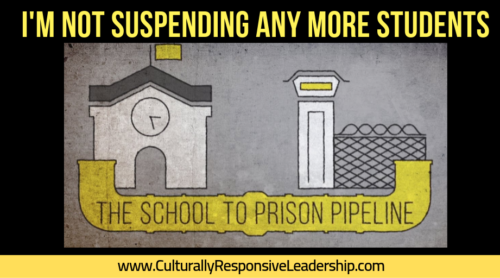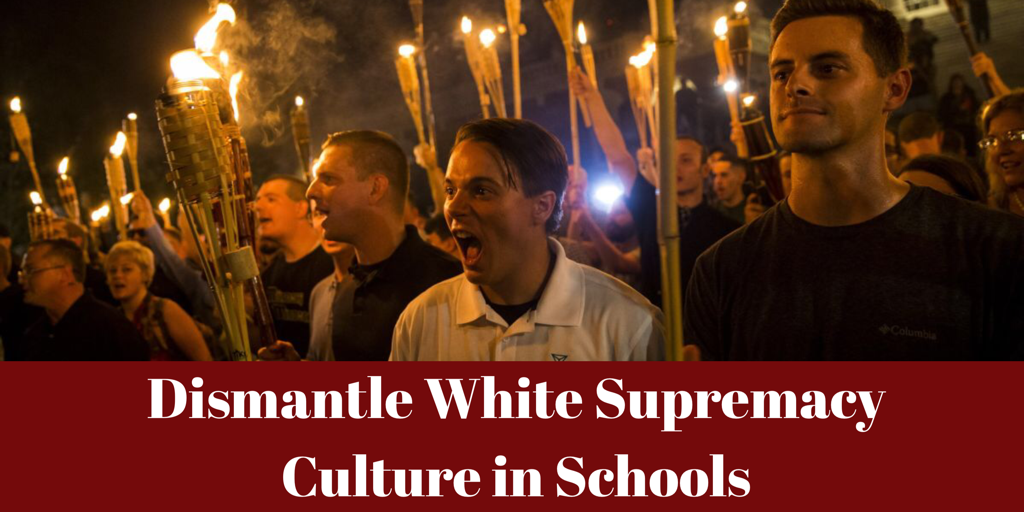No More Suspensions – 40 Questions to Ask Yourself Before You Pull the Trigger
I am so done with suspensions. There, I said it. They’re racist and dehumanizing. Suspensions support anti-Blackness and the overall racial hierarchy in the United States. Check out these 40 questions to ask yourself before you suspend a student again.
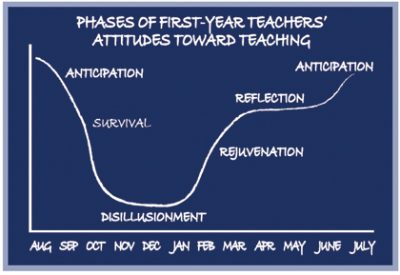
It’s October (honestly the month doesn’t matter that much). Can you feel it? Shit, I can. The honeymoon is over. Patience is thinning or already gone. Students are pushing back and returning to their permanent state of being kids. Staff is upset about the lack of order and learning. Folks want consequences. I can hear them saying, “Somebody’s got to teach them respect, responsibility, trust.” Even our parents are tired.
And, Principals are stuck in the middle. Between their vision and reality. Between supporting adults and supporting kids. Who wins? Who loses? But don’t give up yet. Here’s a few things to consider as you continue to engineer for equity and as you continue to build anti-racist schools.

How to Be an AntiRacist
Ibram X. Kendi writes, that “racism is a set of policies that lead to discrimination” and racist outcomes. These policies support racist beliefs such as the belief that poor/brown students “need law and order,” “are unruly,” and “need a firm hand.” Racist outcomes look like African-American students and Latinx students being disciplined and suspended at rates astronomically higher than their privileged White and Asian counterparts. Therefore, it is safe to say that racism is embedded within the policies of our schools.
We must excavate them like Indiana Jones looking for the Temple of Doom. These policies can include our grading practices, academic tracking, and in this case, discipline. We don’t have to look far to find disproportionality in the outcomes of discipline in schools, including classroom reprimands, out of class referrals, and suspensions. Following Kendi’s thinking, we must therefore create anti-racist policies to yield anti-racist outcomes. I believe that one of these policies is the process in which we decide whether or not to suspend a student.
There are many steps before that, such as how we create equitable spaces for students and socially responsive classrooms. Of course, at the foundation, we need to change our teaching practices, relationships with students, and curriculum. But for this post, I wanna focus just on discipline.
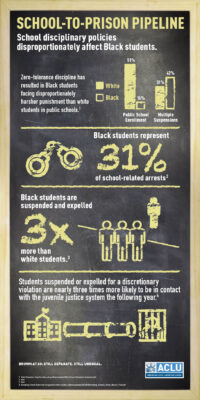
Some Statistics
- 32% of those suspended ONCE in 9th grade dropped out
- 42% of those suspended TWICE in 9th grade dropped out
- Students who were suspended or expelled were nearly THREE TIMES as likely to have contact with the juvenile justice system
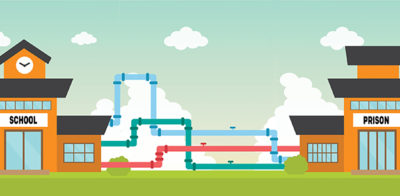
Reflecting on Hundreds of Suspensions
In my 8 years of being a school administrator, I probably have suspended somewhere between 200 and 300 students. Damn. I’m not proud of it. Sure there are reasons for each one of these and at the time, I probably had a very thoughtful justification for making that decision, however that number sits heavy on my mind and heavier on my soul.
Shit. Here I am, a Black man in education, who came into this work, to fight for social justice, now with enough positional authority to at least steer the Titanic minimally off course. But, I have still suspended hundreds of students. Damn. You know, every year I commit myself to try to find alternatives, trying to create a school where the behaviors don’t take place, and I attempt the build systems that do not allow for students to fall through the cracks. But “something happens,” and at the end of the year, there’s still a long list of names that I must take responsibility for.
It has to stop.
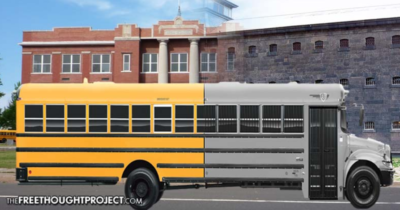
Shit, We Tried it All
This long list of names of children who have been suspended is not from a lack of trying. Rather, it resulted from trying relentlessly to find a way but still arriving at the same outcome. We tried parts of restorative justice, including circles, affective language, and restorative conversations. Truthfully, we did not implement them all fully, and at times the pace of discipline incidents prevented us from doing it.
We tried incentives, monthly celebrations that students would earn, based on their behavior. In our school, we called this the Falcon Fun List, an eligibility based incentive to hopefully motivate students to stay on the right track. Sounds nice right? We tracked behavior, attendance, and suspensions. Sometimes there was variation, but many times it was the same students each month who were losing out on the most fun activities we had in school. Huge problem. Let’s also be real and acknowledge that it was predominately Black and Latinx. Sounds racist to me. We thought about creating a sense of belonging and inclusive environment for our students, especially our marginalized students, and then we exclude them from every damn fun thing (field trips, dances, parties, celebrations) because they “can’t act right” or “need to learn a lesson”. There’s a quote about the definition of insanity that comes to mind. But this is precisely because we are doing what we were trained to do, what the systems was was designed to do: sort, track, reward/punish. With racist outcome.
And of course, we tried suspensions. Hundreds of them. Sometimes, a student never repeated the behavior, but oftentimes they did again and again and again. And we suspended, again and again, and again.
Something has to change!
White Supremacy Culture and Racial Bias
Last year, we spent at least 5 months exploring White Supremacy Culture and its prevalence in our practices. This took form of conversations, reflections, and applications. We spoke generally and at one point specifically focused on the connection between implicit bias and our discipline practices. This was incredible and took a lot of bravery on the part of our staff, especially our White staff. Even for our staff of Color, it was difficult to acknowledge how we have internalized the same racist messages and at times perpetuated White Supremacy Culture on our students of color.
What I hoped would come from this conversation was a deeper racial equity consciousness, and therefore the ability to leverage this new framework and change our actions. Things are always easier said than done. But now that we have this shared understanding, we can build on it.

This Year is Different
I’ll be honest. I came back to school, in my 5th year as principal of the same school, with new fortitude, a new focus. I have more hope and more fire. Over the summer, I read Bettina Love’s book, Abolitionist Teaching, and I was thinking a lot about her concept of how schools ‘spirit murdering” our students. It made me think a lot about how school discipline systems murder the spirits of our students of color.
Let’s be real. Our most resistant students are the canaries in the coal mine. The lash out and yell before they die, metaphorically. Sometimes literally. They know it’s fucked up because they’ve already seen the hypocrisy in the world and they are quickly losing hope. Why not tear down a few bulletin boards, break a few computers, and cuss out a few staff members on the way down. Our marginalized students are the ones that feel they have the least to lose, cry two tears in a bucket, fuck it. They will call it out, stand toe-to-toe with the teacher, and even threaten the Principal. True Story.
Anyways, I knew that something had to change. And it started with me committing to finding alternatives, seeking interventions, and trying to change a system that was/is yielding racist outcomes. As a leader, I can make this bold move and hold a bold vision. This is much harder depending on how much positional authority you have. But you can always organize and mobilize!
Backlash and Reactions
It’s always interesting to see how different people will react to a break from the racist norm, a disruption of the status quo, and the ambiguity of change. Some folks are interested and excited. Other folks are enraged, thinking the audacity. Some folks want harsher consequences, a return to the good old days, and “accountability.” All of this usually means that my job is being assessed, judged, and sized up. This leaves me on an island. This makes the work tough. I try to keep to my values, but it feels like I am being bullied into punishing students. Sometimes I am being bullied by staff, by my colleagues, by parents, and sometimes by the white supremacist in my own head that tells me to “put that kid in their place.” Let’s be real for a second though. Most times, I am being pressured by white folk. And we hide behind all types of coded and safe language.
Folks say,
- “it’s about safety”
- “what about the other kids?”
- “this is a hostile work environment”
- “this is against the union contract”
- “I feared for my life”
- “Next time it will be a gun”
- “We have to prepare her for the real world”
I could go on. And on. Trust me. Been there too many times. But this coded language always is a tool for pushing out kids that have already been pushed out from society, thrown away like the trash they are perceived to be (not by themselves or their community, but by privileged people. By people with power.)
If we want change, we want these racist and not racist folks, out of schools. And if these folks are still on the inside, there should be some stop gaps, some checks and balance, like Kendi said, some anti-racist policies to course correct the USS Racism school ship.
Ok. That was a nice tangent. And a roundabout way of getting to more than a few questions to ask yourself before suspending; before checking those boxes, calling that parent, and giving that student the slip of paper to go home.
40 Questions to Ask Yourself before Suspending a Child
-
- Are you being racist? Better question, how are you being racist?
- Will the suspension teach them anything? Or are you trying to make a point, and to who?
- What is the race of the child? What are your school’s demographics with respect to discipline? Is this student a member of your most suspended group?
- Does this student feel connected to your school and if not why? What can you do to make the child feel more connected, valued, affirmed, and seen?
- Did you or another adult escalate their behavior at any point?
- What happened to the student to initiate the behavior? Check out the ABC Framework.
- Have you read Pushout by Monique Morris or Sing a Rhythm, Dance a Blues?
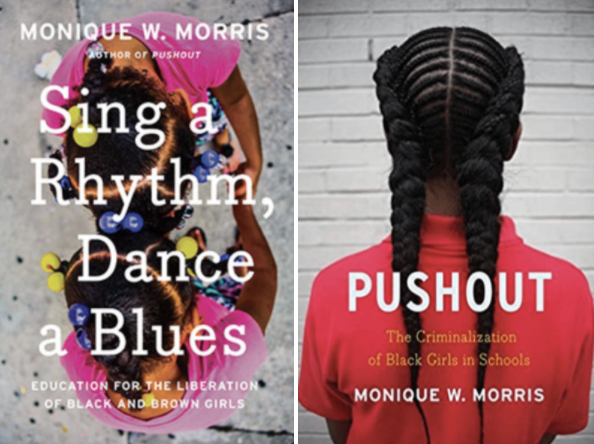
- Is there a social-emotional skill gap? Does the student struggle with processing? (no, not just because they are students of color, that’s racist, but is there a SEL skill that might help?
- How old is this child and are you treating them like an adult? Can you remember how reflective, mature, and impulsive you were at their age?
- Are you feeling emotional? Is that clouding your judgement? How is your work/life balance? Can you take 5 deep breaths before making a decision?
- Have you read Trauma-Sensitive Schools, by Susan Craig?
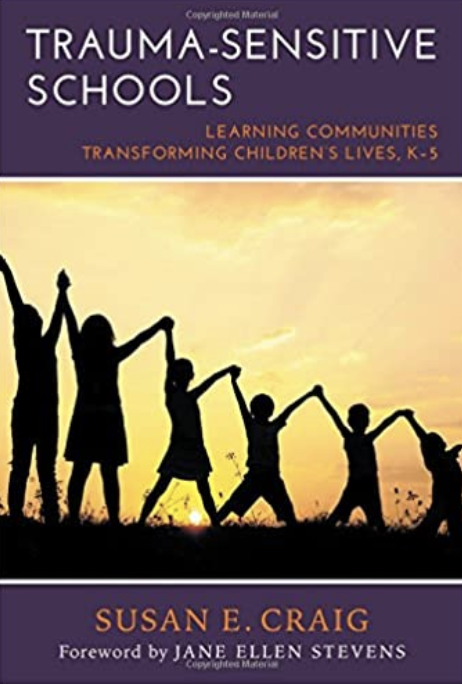
- Is this about what they did or the fact that they aren’t showing remorse? Why do you deserve their remorse?
- Is your paternalism, power hoarding, and sense of urgency acting up? Read about White Supremacy Culture.
- Are you manifesting your vision or have you been influenced or worse, bullied by other folks’ visions? Do you feel like you need to impress other staff by suspending this student? Who benefits? Who suffers?
- Are you trying to teach a lesson to other students by excluding this student? What is the indirect message you will send?
- What would you do if this was your actual, blood-related, child, (on your good day)?
- Have you met with the parent or tried a home visit?
- Are you upset? You are probably upset? Are you upset at yourself, the school system, or the child? Is it the child’s fault?
- Have you read Discipline Over Punishment, by Trevor Gardner?
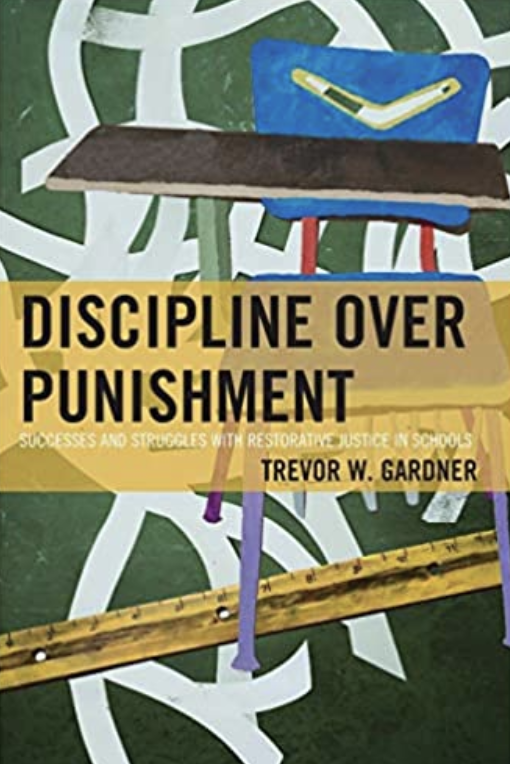
- What are their academic skill levels? What is their reading proficiency level? Is their behavior a manifestation of their academic skills, frustration, internalized oppression, or stereotype threat?
- What is their home situation?
- Have you read the Little Book of Restorative Discipline, by Lorraine Amstutz?

- How has the student been affected by trauma? Are you contributing to their trauma? Check out research on Adverse Childhood Experiences. Peep Nadine Burke Harris’ work.
- How many interventions have you tried? Have you done them with fidelity? How have they responded to these interventions? How long have you waited?
- Have you read Lost at School by Ross Greene?
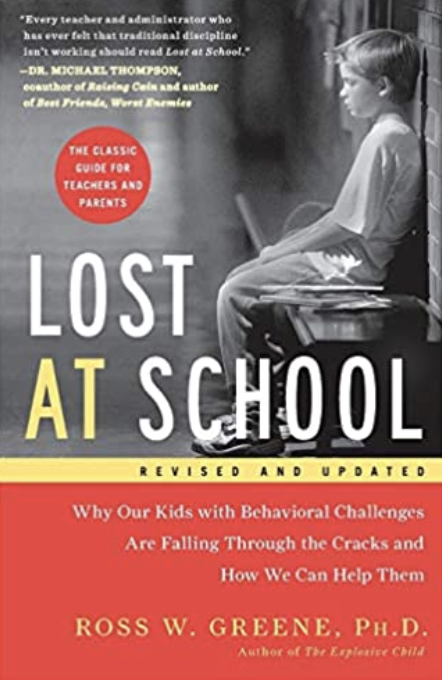
- Have you given the student time to cool down, process, and reflect? How long have really given them? Are you still looking at them, right now? Are you asking them to look you in the eyes, while you talk down them?
- Does your school have a team dedicated to Positive Behavior Interventions and Supports, Restorative Practices/Justice, and Community?
- How is your race, identity, and/or class contributing to your bias about how this child should act, behave, or respond?
- Have you asked another adult to try to check in with the child?
- What alternatives do you have to suspensions? Reflections, community service, restorative conversations, social-emotional learning, or mindfulness?
- Can you try again tomorrow? Can the conversation, apology, response, or decision wait until tomorrow? Why are you being so urgent?
- Do you know the statistics on suspension and the school to prison pipeline?
- Have you reached out to parents, family, or their trusted adult at your school?
- Is there a safe place the student can identify and go there until they cool off and are ready to have a conversation?
- Do you believe the student is capable of improving? If not, why not?
- What would you say if the student was white, asian, middle class, came from a “good family,” was rich, was the child of the superintendent, or never had a previous behavior incident? Can you say that to them?
- Have you read Hacking School Discipline, by Nathan Maynard and Brad Weinstein?
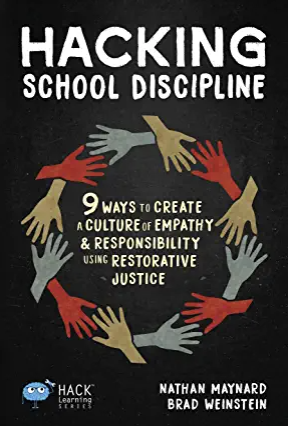
- Are your rules and expectations clear? Have they been taught explicitly? Are your rules racially/class/gender biased? Did the student know that they would be suspended if their behavior worsened, the last time something happened?
- Did you grow up in this child’s neighborhood? Do you live in their neighborhood? How does your class bias influence how you are reacting?
- Why do we have suspensions again? What message will be sent to the student as a result of this suspension?
Final Thoughts
Look, I didn’t say it was going to be easy. It’s fucking hard. As much as I am writing this for others, I’m also talking to myself. It’s hard to change behavior, of the students, of the adults, and of the system. I have to change my behavior first. And I do know this. If we create the conditions where we HAVE to find alternatives, we WILL. This requires innovation, and if we can be innovative with our teaching practices and flexible seating, then goddamn it, we should be innovative we our response student behavior.
This is a long and arduous road. It will be riddled with resistance, ambiguity, and full on attacks. But it is a road that will lead us to anti-racist outcomes. I don’t know what your identity is (it does matter), but I cannot be a Black man standing by and letting racism continue on my watch. I need my allies and co-conspirators to stay vigilant. Stay committed. Good luck.

